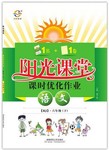题目内容
15.I'm trying to break the _______ of getting up too late.( )| A. | tradition | B. | convenience | C. | habit | D. | leisure |
分析 我正在努力改掉晚起的习惯.
解答 答案:C
解析:A:传统;B:便利;C:习惯;D:娱乐.根据句意"我正在努力改掉晚起的习惯"及所给选项分析可知本题答案为C选项,其余选项均不符合题意.
点评 本题考查名词的辨析,做此类题目时一定要清楚各个选项的含义再结合句意选出最佳答案.

练习册系列答案
 阳光课堂课时优化作业系列答案
阳光课堂课时优化作业系列答案
相关题目
6.Parents who smoke often open a window or turn on a fan to clear the air for their children,but experts now have identified a related threat to children's health that isn't as easy to get rid of:third-hand smoke.
That's the term(36)Cto discuss the invisible yet poisonous mixture of gases and particles(颗粒) clinging(依附) to smokers'hair and(37)B,not to mention cushions and carpeting,that stays long after second-hand smoke has cleared from a room.The remaining(38)Aheavy metals,carcinogens(致癌物) and even radioactive materials that young children can get on their hands and take in,(39)Aif they're crawling or playing on the floor.
Doctors from Mass General Hospital for Children in Boston used the term"third-hand smoke"to(40)Dthese chemicals in a new study that(41)Aon the risks they pose to infants and children.The study was published in the(42)Bissue of the journal Pediatrics.
"Everyone knows that second-hand smoke is bad,(43)Athey don't know about this,"said Dr.Jonathan P.Winickoff,the lead author of the study and an assistant professor of Pediatrics at Harvard Medical School.
"When their kids are(44)Bthe house,they might smoke.Or they smoke in the car.Or they settle the kid in the car seat in the back and(45)Cthe window and smoke,and they think it's okay because the second-hand smoke isn't getting to their (46)C.We needed a term to describe these tobacco toxins(毒素)that aren't(47)A."
The study reported on(48)Btowards smoking in 1,500 households across the United States.It found that the vast majority of both smokers and nonsmokers were(49)Dthat second-hand smoke is harmful to children.Some 95 percent of nonsmokers and 84 percent of smokers(50)Bwith the statement that"inhaling smoke from a parent's cigarette can(51)Athe health of infants and children".
But(52)Cfewer of those surveyed were conscious of the(53)Bof third-hand smoke.Since the term is so new,the researchers asked people if they(54)Athe statement that"breathing air in a room(55)Bwhere people smoked yesterday can harm the health of infants and children".
Only 65 percent of nonsmokers and 43 percent of smokers answered yes.
That's the term(36)Cto discuss the invisible yet poisonous mixture of gases and particles(颗粒) clinging(依附) to smokers'hair and(37)B,not to mention cushions and carpeting,that stays long after second-hand smoke has cleared from a room.The remaining(38)Aheavy metals,carcinogens(致癌物) and even radioactive materials that young children can get on their hands and take in,(39)Aif they're crawling or playing on the floor.
Doctors from Mass General Hospital for Children in Boston used the term"third-hand smoke"to(40)Dthese chemicals in a new study that(41)Aon the risks they pose to infants and children.The study was published in the(42)Bissue of the journal Pediatrics.
"Everyone knows that second-hand smoke is bad,(43)Athey don't know about this,"said Dr.Jonathan P.Winickoff,the lead author of the study and an assistant professor of Pediatrics at Harvard Medical School.
"When their kids are(44)Bthe house,they might smoke.Or they smoke in the car.Or they settle the kid in the car seat in the back and(45)Cthe window and smoke,and they think it's okay because the second-hand smoke isn't getting to their (46)C.We needed a term to describe these tobacco toxins(毒素)that aren't(47)A."
The study reported on(48)Btowards smoking in 1,500 households across the United States.It found that the vast majority of both smokers and nonsmokers were(49)Dthat second-hand smoke is harmful to children.Some 95 percent of nonsmokers and 84 percent of smokers(50)Bwith the statement that"inhaling smoke from a parent's cigarette can(51)Athe health of infants and children".
But(52)Cfewer of those surveyed were conscious of the(53)Bof third-hand smoke.Since the term is so new,the researchers asked people if they(54)Athe statement that"breathing air in a room(55)Bwhere people smoked yesterday can harm the health of infants and children".
Only 65 percent of nonsmokers and 43 percent of smokers answered yes.
| 36.A.told | B.advised | C.adopted | D.mentioned |
| 37 A.shoes | B.clothing | C.body | D.mouth |
| 38.A.includes | B.covers | C.finds | D.improves |
| 39.A.especially | B.specially | C.immediately | D.regularly |
| 40.A.name | B.call | C.explain | D.describe |
| 41.A.focused | B.tended | C.tried | D.worked |
| 42.A.later | B.latest | C.latter | D.previous |
| 43.A.but | B.and | C.however | D.or |
| 44.A.alongside | B.out of | C.in | D.beside |
| 45.A.break up | B.break down | C.wind up | D.wind down |
| 46.A.cars | B.seats | C.kids | D.windows |
| 47.A.visible | B.invisible | C.poisonous | D.concrete |
| 48.A.policies | B.attitudes | C.bans | D.habits |
| 49.A.told | B.content | C.confident | D.aware |
| 50.A.opposed | B.agreed | C.fought | D.connected |
| 51.A.harm | B.destroy | C.improve | D.confuse |
| 52.A.quite | B.very | C.far | D.too |
| 53.A.chances | B.risks | C.abilities | D.conditions |
| 54.A.subscribe to | B.apply to | C.submit to | D.cater to |
| 55.A.tomorrow | B.today | C.yesterday | D.weekend |
20.Whenever I met her,_________ was fairly often,she greeted me with a sweet smile.( )
| A. | who | B. | which | C. | when | D. | that |
7.Jane was asked a lot of questions,but she didn't answer of them.( )
| A. | other | B. | any | C. | none | D. | some |
4.The medicine works more effectively ______ you drink some hot water after taking it.( )
| A. | as | B. | until | C. | although | D. | if |